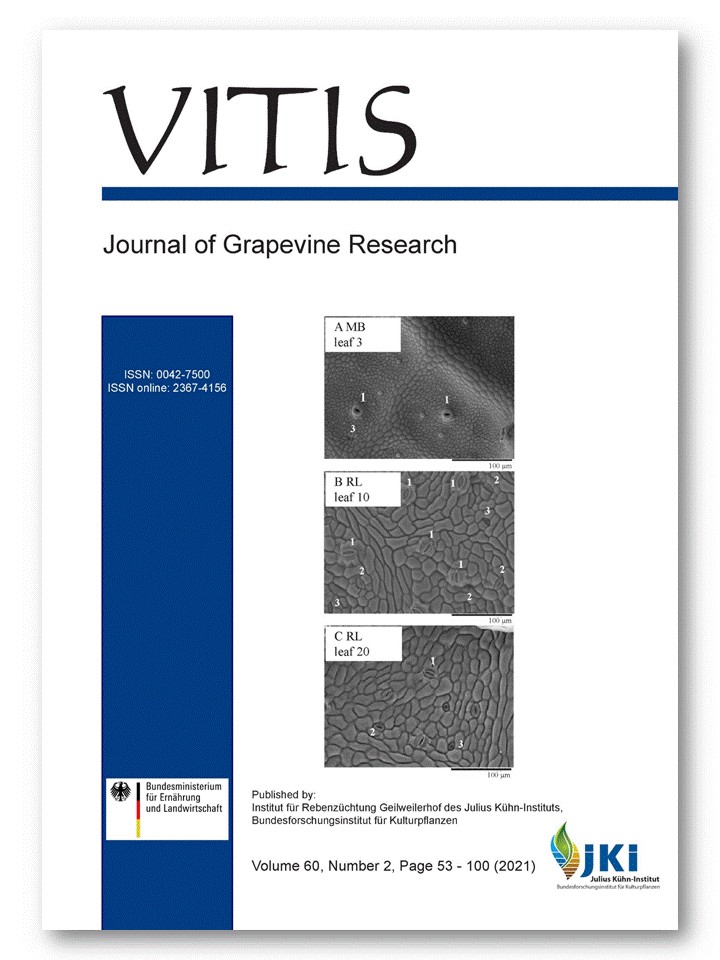Anatomical physiological and biochemical processes involved in grapevine rootstock drought tolerance
DOI:
https://doi.org/10.5073/vitis.2021.60.53-61Abstract
In order to explore the drought resistance mechanism of grape rootstocks, two grape rootstock species, '1103P' (a drought-tolerant rootstock) and '101-14M' (drought-sensitive), were treated with moderate water deficit (field capacity of 45-50 %). Throughout the experimental period, the leaves of '1103P' showed a higher stomatal conductance (gs), relative water content and photosynthetic rate (Pn) than '101-14M', indicating '1103P' was more resistant to tolerant than '101-14M'. We propose that '1103P' could prevent water loss from leaves under drought conditions based on the discoveries that '1103P' had higher leaf phytohormone abscisic acid (ABA) content and leaf cuticular wax content, and smaller stomata aperture than those of '101-14M'. Additionally, the activities of H2O2-scavenging enzymes in leaves of '1103P' were higher than those of '101-14M' under drought conditions, indicating the lipid peroxidation induced by H2O2 of '1103P' was less serious than that of '101-14M'. Therefore, better water-saving and higher reactive oxygen species (ROS) scavenging abilities contributed together to stronger drought resistance of '1103P' than '101-14M'.
Downloads
Published
Issue
Section
License
Copyright (c) 2021 The Author(s)

This work is licensed under a Creative Commons Attribution 4.0 International License.
The content of VITIS is published under a Creative Commons Attribution 4.0 license. Any user is free to share and adapt (remix, transform, build upon) the content as long as the original publication is attributed (authors, title, year, journal, issue, pages) and any changes to the original are clearly labeled. We do not prohibit or charge a fee for reuse of published content. The use of general descriptive names, trade names, trademarks, and so forth in any publication herein, even if not specifically indicated, does not imply that these names are not protected by the relevant laws and regulations. The submitting author agrees to these terms on behalf of all co-authors when submitting a manuscript. Please be aware that this license cannot be revoked. All authors retain the copyright on their work and are able to enter into separate, additional contractual arrangements.



